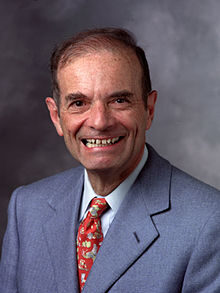IN MEMORIAM
Lubert Stryer

Lubert Stryer is a prominent biochemist renowned for his pioneering contributions to the field of molecular biology, particularly in the study of visual phototransduction. Born on March 2, 1938, in Tianjin, China, Stryer moved to the United States at a young age and pursued his education with exceptional dedication. He earned his Bachelor of Arts degree in Biochemical Sciences from Harvard University in 1957 and subsequently completed his M.D. at Harvard Medical School in 1961.
Stryer’s early academic career was marked by significant research in biochemistry and molecular biology. After completing his medical degree, he joined the laboratory of Harden M. McConnell at Stanford University, where he began his groundbreaking work on the biochemistry of vision. His research elucidated the molecular mechanisms underlying the function of photoreceptor cells in the retina, which are essential for vision. Stryer’s studies on the visual pigment rhodopsin and its interaction with light were instrumental in advancing the understanding of how light signals are converted into neural signals in the brain.
In 1969, Stryer was appointed as a professor at the Stanford University School of Medicine, where he continued to make significant contributions to the field of biochemistry. His research expanded to include the study of G protein-coupled receptors (GPCRs), a large family of cell surface receptors that play a crucial role in various physiological processes. Stryer’s work on GPCRs has had a profound impact on the development of new therapeutic strategies for a wide range of diseases.
One of Stryer’s notable achievements is the publication of his widely acclaimed textbook, “Biochemistry,” first released in 1975. The textbook has become a cornerstone in the education of biochemistry students worldwide, known for its clarity, comprehensive coverage, and emphasis on the molecular basis of biological processes.
In addition to his academic and research accomplishments, Stryer has been an active member of the scientific community. He was elected to the National Academy of Sciences in 1984 and has received numerous awards and honors for his contributions to science, including the prestigious Gairdner Foundation International Award and the Albert Lasker Award for Basic Medical Research.
Stryer’s involvement with the Aspen Center for Physics reflects his commitment to interdisciplinary collaboration and scientific dialogue. Stryer participated in various workshops and conferences, contributing his expertise in biochemistry to foster cross-disciplinary exchanges and advance scientific knowledge. He served as a General Member from 2003 – 2008.
Lubert Stryer’s career is a testament to his dedication to scientific inquiry and education. His research has not only expanded the understanding of molecular mechanisms in biology but has also paved the way for new therapeutic approaches to treat human diseases. His influence continues to be felt through his textbook, his contributions to the scientific community, and the many students and researchers he has inspired throughout his career.
Memorial obituaries by Jeremy Berg in Science here and Nina Bai in Stanford Medicine News Center here.

Positions Held
General Member, 2003 – 2008